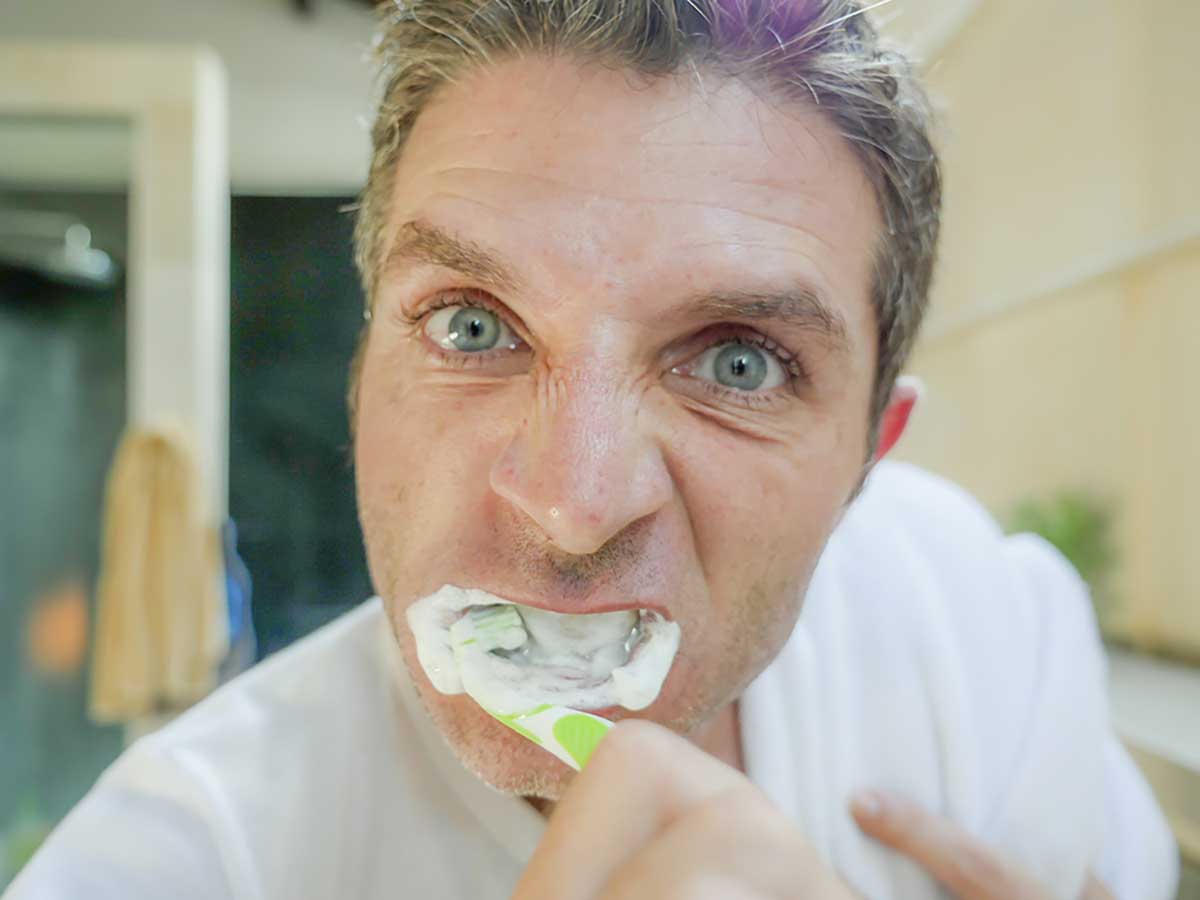Maintaining good oral hygiene is crucial for overall health, but like many things in life, it is possible to have too much of a good thing. Overbrushing, also known as toothbrush abrasion, involves brushing your teeth too hard, too frequently, or using a toothbrush with bristles that are too stiff.
This seemingly diligent habit can lead to a variety of dental issues.
Table of Contents
The Dangers of Overbrushing
1) Enamel Erosion
Overbrushing can have serious negative impacts on dental health, primarily through the erosion of tooth enamel. This enamel, the hardest and most mineralized substance in the body, is a crucial protective barrier for teeth, guarding against decay and insulating against sensitivity.
When this layer is eroded due to aggressive or excessive brushing, several problems can arise.
Firstly, it can increase tooth sensitivity, as the protective barrier is worn away, exposing the underlying dentin and nerve endings.
This exposure can result in discomfort or sharp pain when consuming hot, cold, sweet, or acidic foods and drinks.
Secondly, the erosion of enamel makes teeth more susceptible to cavities. Without the protective enamel layer, teeth are more vulnerable to bacterial attack and acid erosion, leading to decay.
Enamel erosion is irreversible, and once it’s compromised, the damage can lead to long-term dental issues, requiring potentially costly and extensive dental treatments to manage the resulting problems.
Therefore, understanding and avoiding the dangers of overbrushing is essential for maintaining long-term dental health.
2) Gum Recession
3) Toothbrush Abrasion
4) Damaged Fillings or Restorations
Best Practices for Healthy Brushing
- Use a Soft-Bristled Toothbrush: Soft bristles are gentle on your enamel and gums. They can effectively clean your teeth without causing damage.
- Proper Brushing Technique: Hold the brush at a 45-degree angle to your gums and use gentle, circular motions. Avoid sawing back-and-forth motions.
- Limit Brushing Time: Brushing for two minutes twice a day is generally recommended. More frequent or prolonged brushing can increase the risk of abrasion.
- Avoid Abrasive Toothpaste: Some toothpastes, especially those marketed for whitening, can be abrasive. Opt for a fluoride toothpaste with mild abrasives.
- Monitor Your Brushing Force: Pay attention to the pressure you’re applying. If you notice bristles bending significantly, you’re brushing too hard.
- Replace Your Toothbrush Regularly: Change your toothbrush or the head of your electric toothbrush approximately every three to four months, or sooner if the bristles are frayed.
What is the proper technique to brush your teeth correctly?

Brushing your teeth correctly is vital for maintaining good oral health. Here’s a step-by-step guide to the proper technique:
- Choose the Right Toothbrush: Use a soft-bristled toothbrush to avoid damaging your teeth and gums. Consider an electric toothbrush for a cleaner consistency.
- Use Fluoride Toothpaste: A pea-sized amount of fluoride toothpaste is recommended. Fluoride strengthens tooth enamel and helps prevent decay.
- Correct Angle: Hold your toothbrush at a 45-degree angle to your gums. This angle helps the bristles reach the gum line, where plaque accumulates.
- Gentle Circular Motions: Use gentle, short, circular motions to brush the outer surfaces of your teeth. Avoid a rigid, back-and-forth scrubbing motion, which can harm your gums and enamel.
- Brush All Surfaces: Make sure to clean all surfaces of each tooth – the outer, inner, and chewing surfaces. For the inner surfaces of the front teeth, tilt the brush vertically and use up-and-down strokes.
- Don’t Forget Your Tongue: Gently brush your tongue or use a tongue scraper. This removes bacteria and helps keep your breath fresh.
- Time It Right: Brush for at least two minutes, spending 30 seconds in each quadrant of your mouth. This duration is essential for thorough cleaning.
- Rinse Your Mouth: After brushing, rinse your mouth with water. You can also use an antiseptic mouthwash for additional cleaning and to reduce bacteria.
- Change Your Toothbrush Regularly: Replace your toothbrush or the head of your electric toothbrush every three to four months or sooner if the bristles are frayed.
- Regular Dental Check-Ups: Along with proper brushing, regular visits to the dentist are crucial for maintaining oral health.
Remember, brushing your teeth is part of a complete oral hygiene routine.
Flossing daily, eating a balanced diet, and avoiding tobacco products also play significant roles in keeping your mouth healthy.
When to See a Dentist
If you notice signs of enamel wear, such as increased sensitivity, discolouration, or notches on your teeth, consult your dentist.
They can assess your brushing technique and recommend changes to your routine or dental products.
Sometimes, they may also suggest treatments to protect your teeth and gums, like fluoride varnishes or dental sealants.
In conclusion, while maintaining good oral hygiene, avoiding overbrushing is crucial.
Using a gentle technique and the right tools, you can keep your teeth and gums healthy without causing unnecessary harm.
Remember, when it comes to brushing, more is not always better.









